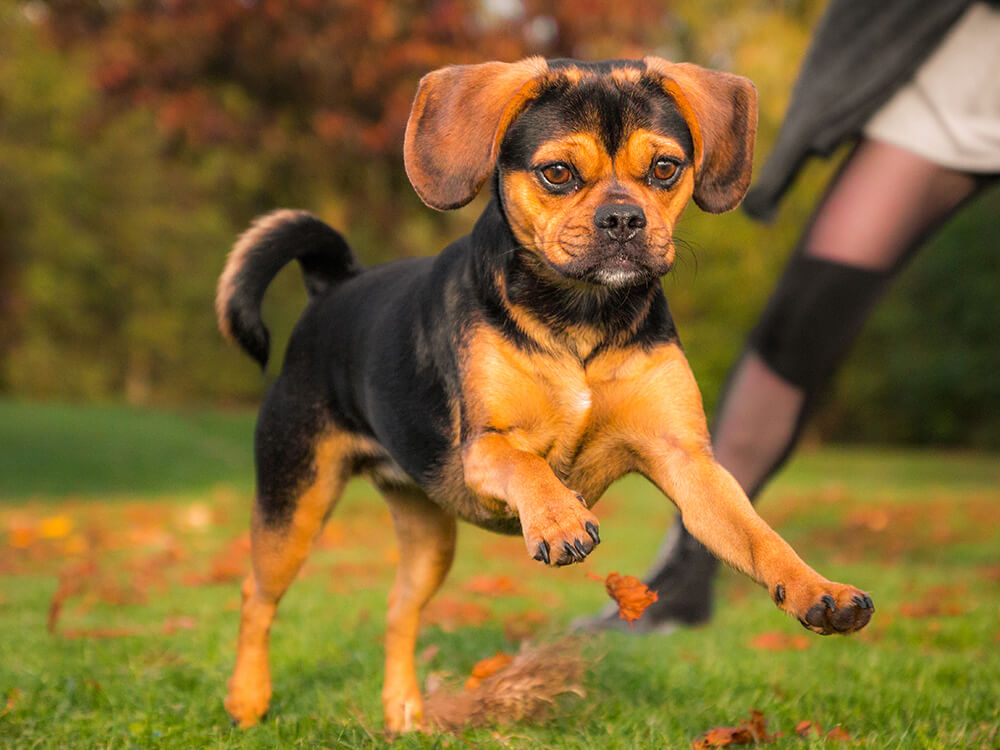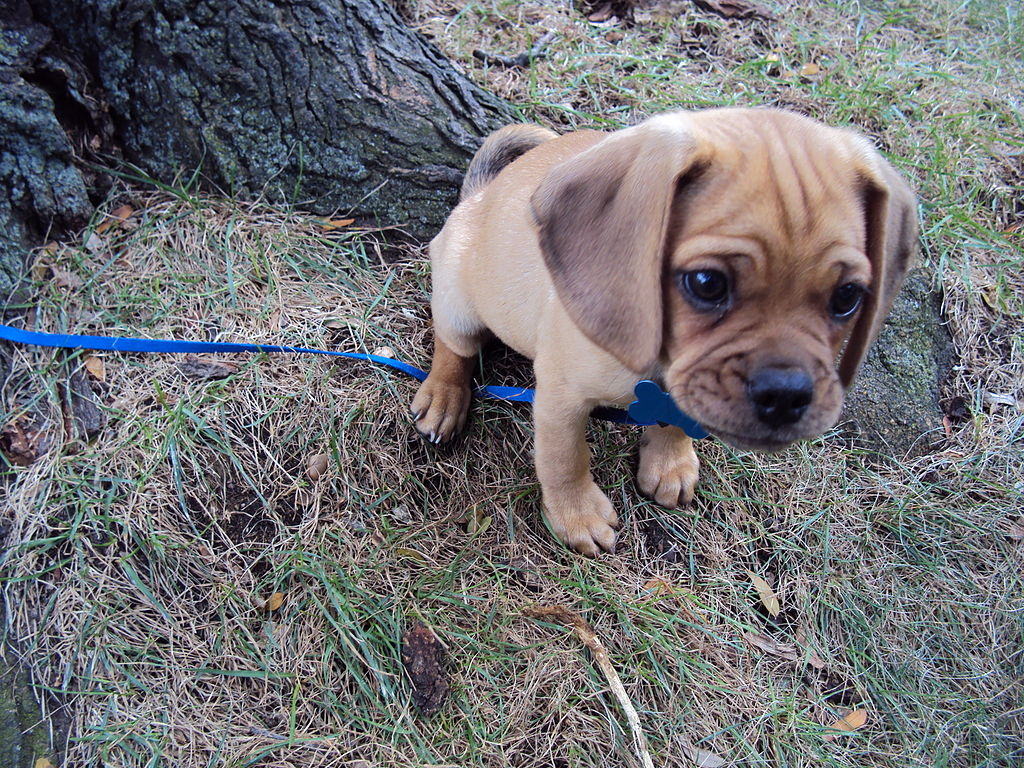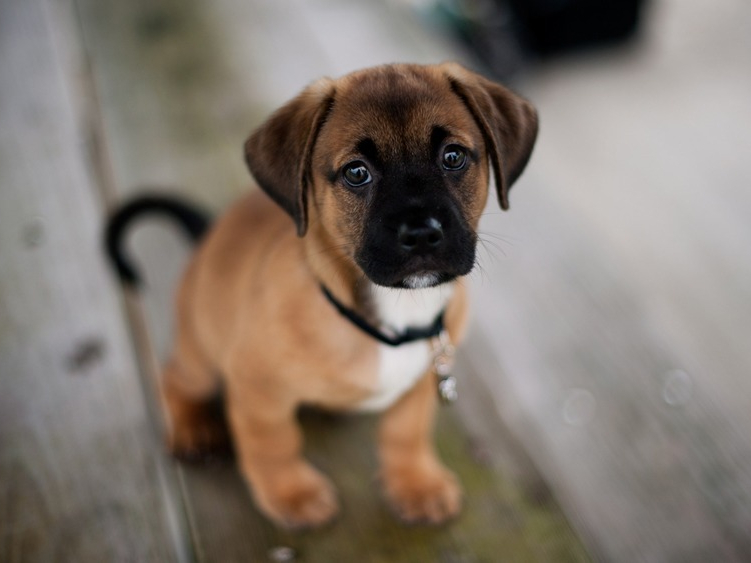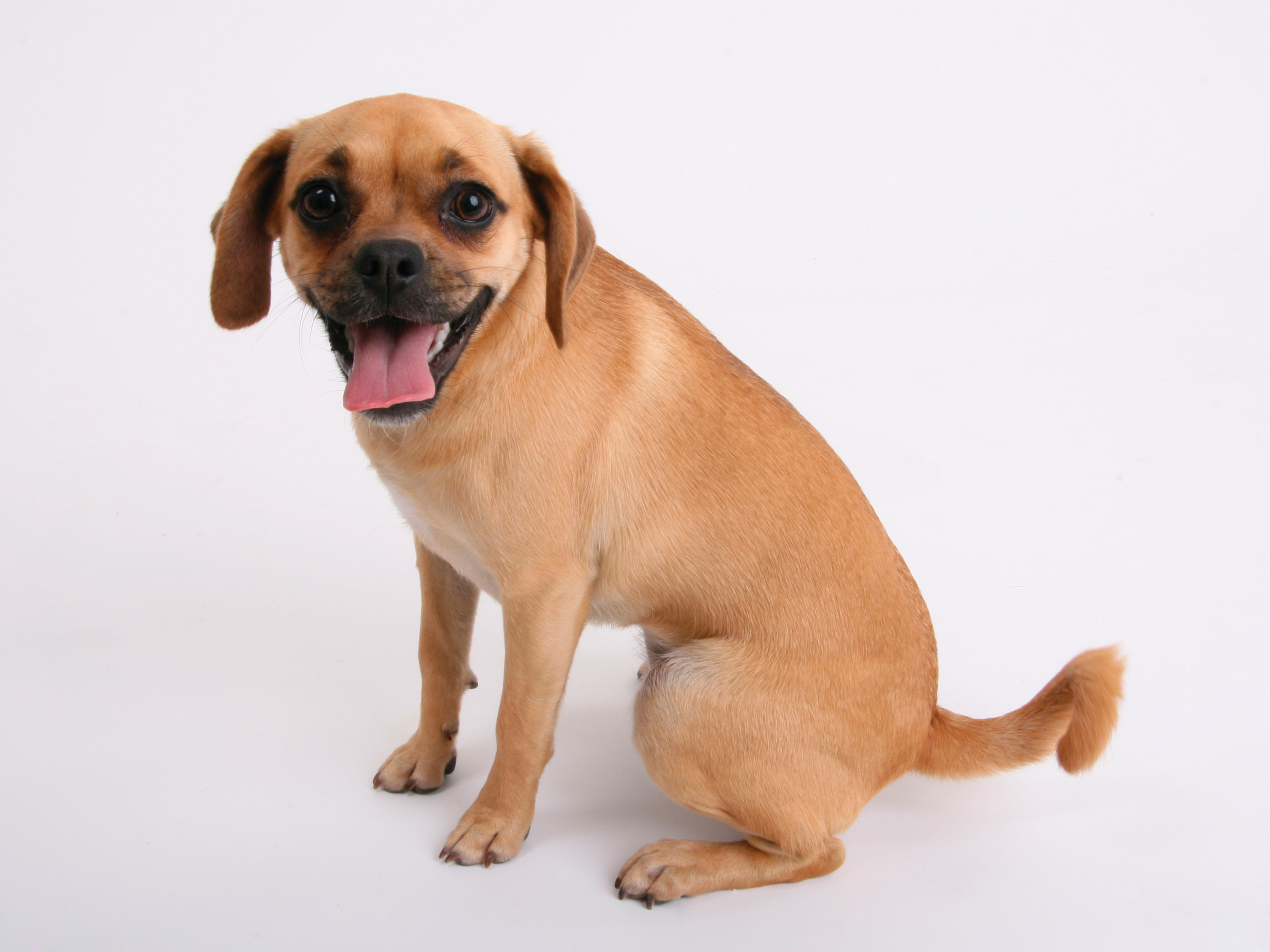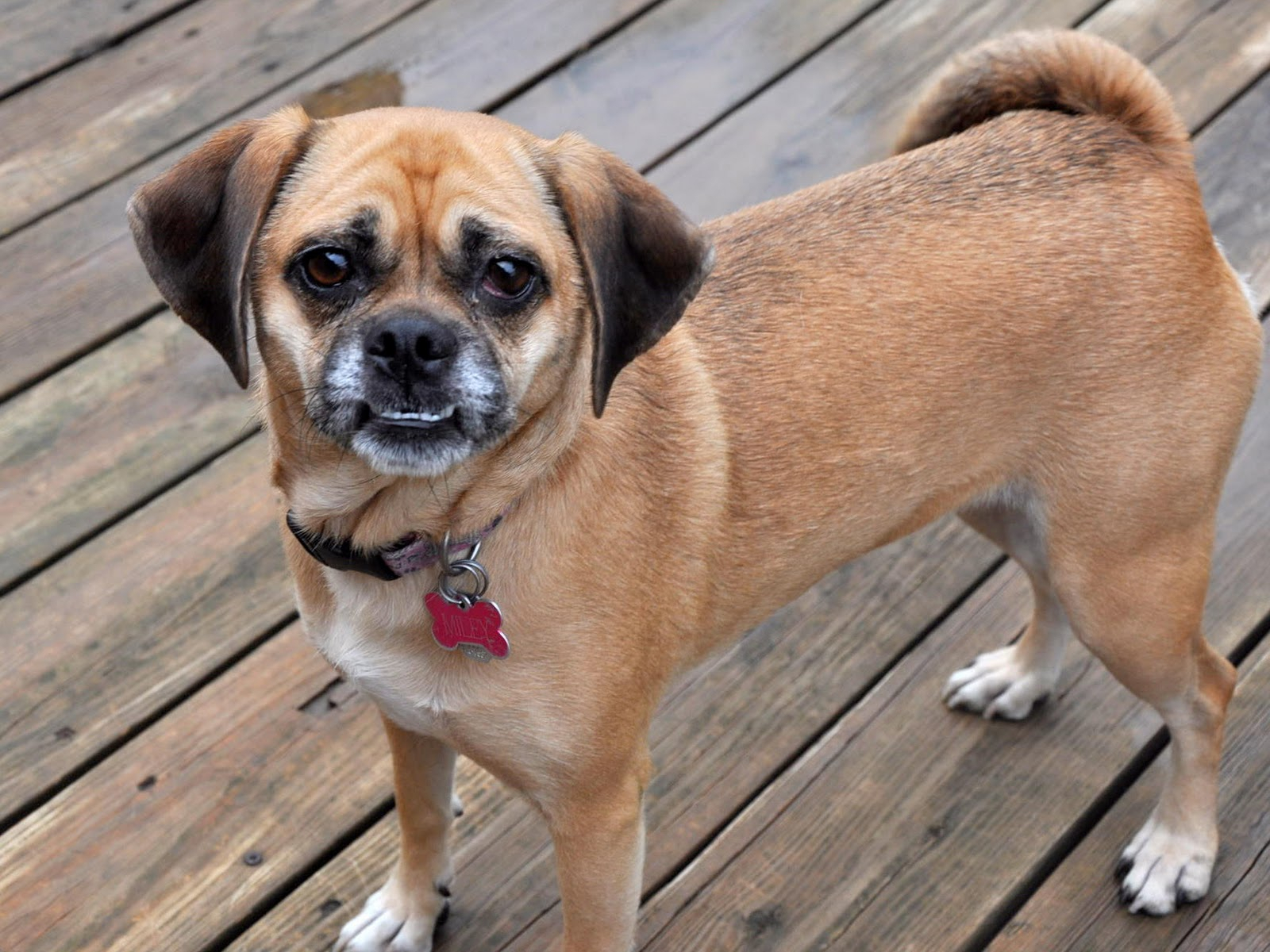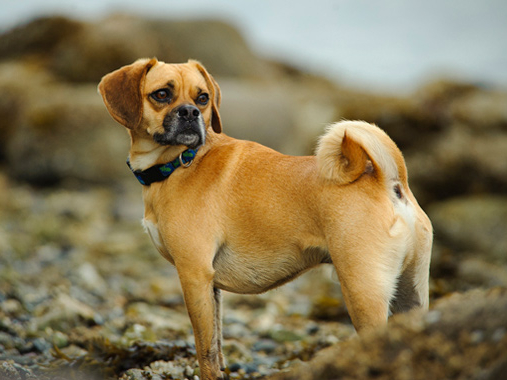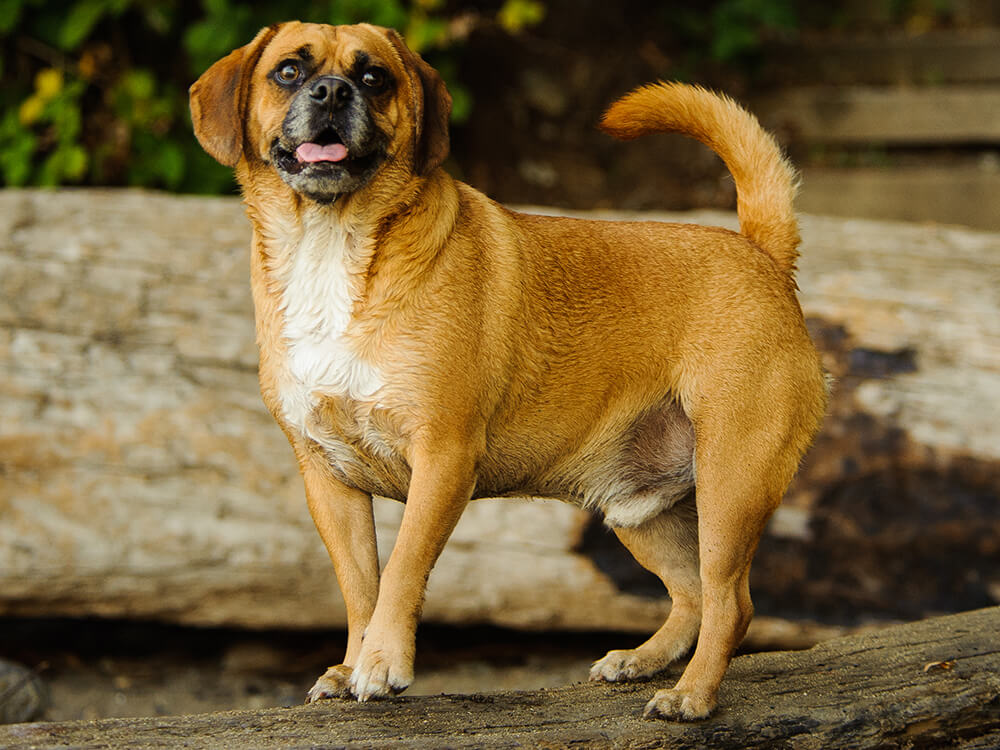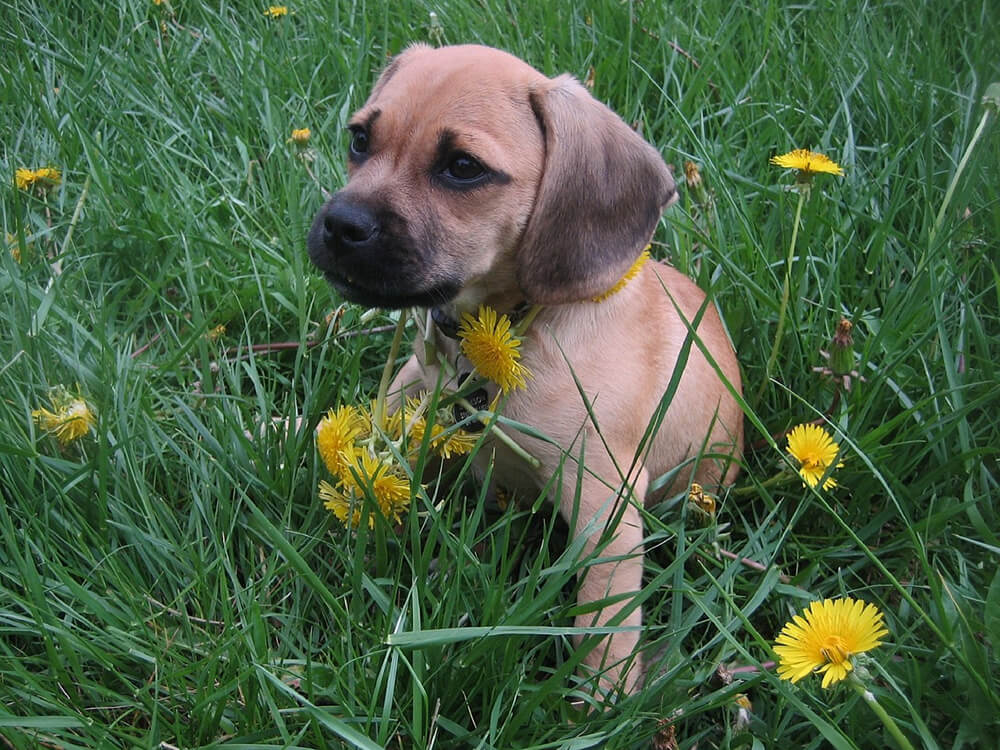
Puggle Breed Pictures
Vital Breed Stats
| Height: | 25 - 38 cm M | 25 - 38 cm F |
| Weight: | 7 - 18 kg M | 7 - 18 kg F |
| Life Expectancy: | 13 - 15 years |
| KC Registered: | No |
Breed Characteristics
| Size: |  |
| Grooming: |  |
| Exercise Level: |  |
| Trainability: |  |
| Barking Level: |  |
| Good with Children: |  |
| Good with other pets: |  |
| Affectionate: |  |
| Protective: |  |
| Cost to Keep: |  |
Give a thumbs up if you love the Puggle

0
More About the Breed
History
A relatively new breed, the first Puggle emerged in the 1980s in the USA. This canine was the result of the crossbreeding of a Pug and a Beagle, thus the portmanteau of the name. As such, the Puggle has traits from both parent breeds. From the Pug, this dog got its love for the home and an entertaining personality. It got its excellent nose and tendency to track from the Beagle.
Further, it has been said that the Pug traits were intended to tone down the Beagle impulse for roaming and independence. However, the combination of such hereditary qualities cannot be controlled entirely. As such, not all Puggle personalities are exactly alike, although there are common denominators, such as the affectionate and kind nature.
In the last few decades, Puggle breeders have been more careful in choosing studs to ensure that the resulting pups are healthy. This crossbred canine has also become popular in various parts of the world, including the UK. It is still not yet recognised as a distinct breed by The Kennel Club, though.
Appearance
This small dog stands 20–38 cm in height and weighs about 7–14 kg on average. It is not too small nor too big. Its small size makes it an appealing pet for those living in smaller accommodations, which also adds to its popularity.
As mentioned, the Puggle inherits both Pug and/or Beagle traits. This means that some Puggle puppies may have more Beagle features, whilst others may look closer to a Pug. However, this canine generally has a pushed-in, brachycephalic face, expressive eyes, and droopy ears, which is reminiscent of its beagle genes. Its body is thick, with legs on the shorter side. Its loins are rounded and well-muscled, and its back is level and firm. Its short tail curls over its back, and is perky.
Its short, straight-haired coat comes in a variety of colours, which also means there are black Puggles. Most of them, though, come with a fawn coat and black mask. As such, it looks like a miniature version of the English Mastiff.
Grooming
Temperament
The Puggle temperament has been likened to that of a small tornado. It is a lively, active dog that likes to sniff and track and also run about and play. It loves people and is very affectionate, which has earned it its lapdog reputation.
Even-tempered and very sociable, the Puggle likes to be around its humans most of the time. As such, it does not like to be left alone, even for short periods. Some Puggles may be a bit more independent, though, and can be left alone (but not for long).
Intelligence
Being an intelligent breed, this pooch is curious and likes to explore with its nose. It may also be prone to digging and escaping, which requires fencing reinforcements in homes with yards. It also has a stubborn streak, as both breed parents have this side to them. That being said, training sessions should be kept short and filled with praise and treats.
The Puggle tends to inherit the barking and howling tendencies of both parents and are thus wont to do both. It is also recommended to socialise it at an early age to ensure that it develops into a balanced and mature dog.
Nutrition
Feeding
For a Puggle that is 2–- months old, feed it 105–-09 g of food daily, depending also on its size and activity level. For one that is 7–-0 months old, feed it 115–155 g of food daily. When it turns 11 months and beyond, you can feed it with adult food.
The adult Puggle weighing 7–12 kg should be fed about 131–225 g of food daily, also taking into consideration its activity level. For those 14 kg and above, the daily portion ranges from 192–252 kg.
Health
- Cherry eye
- Epilepsy
- Hip dysplasia
- Dry eye
- Respiratory problems
- Allergies
- Reverse sneezing
Exercise
Cost of Ownership
The average Puggle price for a well-bred pup is between £300 and £700. Insurance may cost about £18 (basic) to £43 (lifetime) monthly. The food expenses may reach about £20–£30 monthly. For vaccinations, boosters, annual checks, and other veterinary costs, pet care expenses may add up to more than £800 per year.
On average, a Puggle owner will spend about £50–£80 per month. The insurance costs can also impact these cost estimates. For its lifetime (10–15 years), the costs can range from £6,000 to £14,400 overall. This estimate does not include the expenditures incurred in getting a puppy, though.
Puggle Breed Highlights
- The Puggle is an affectionate and energetic pet suitable for equally energetic owners and families.
- Its short coat is easy to maintain.
- This dog is brachycephalic and is vulnerable to respiratory issues.
- This pooch is very intelligent and is thus easy to train.
- The Puggle tends to bark and howl at times.






